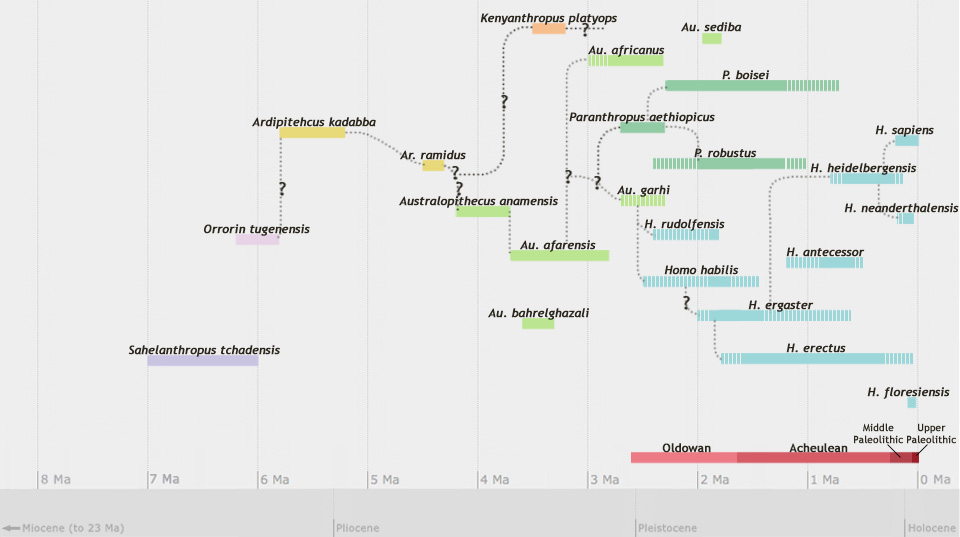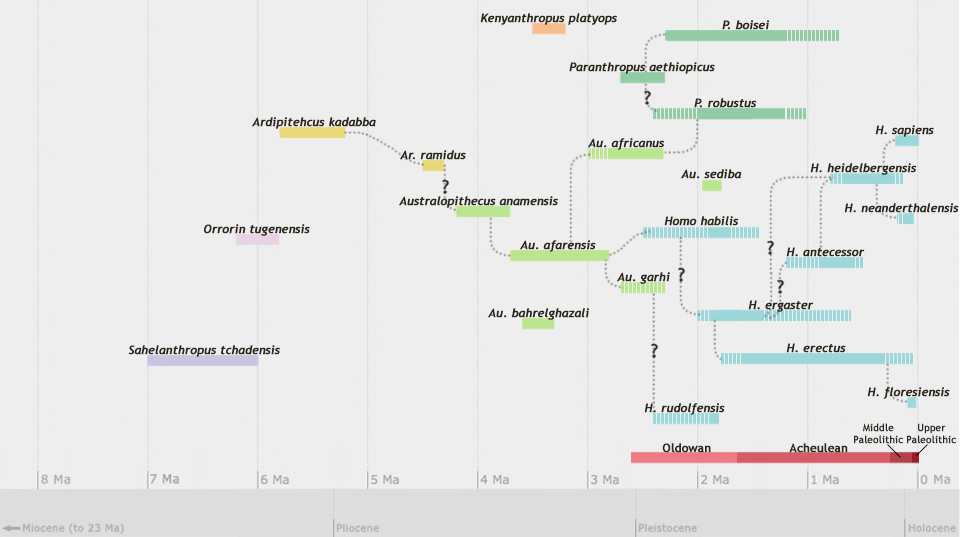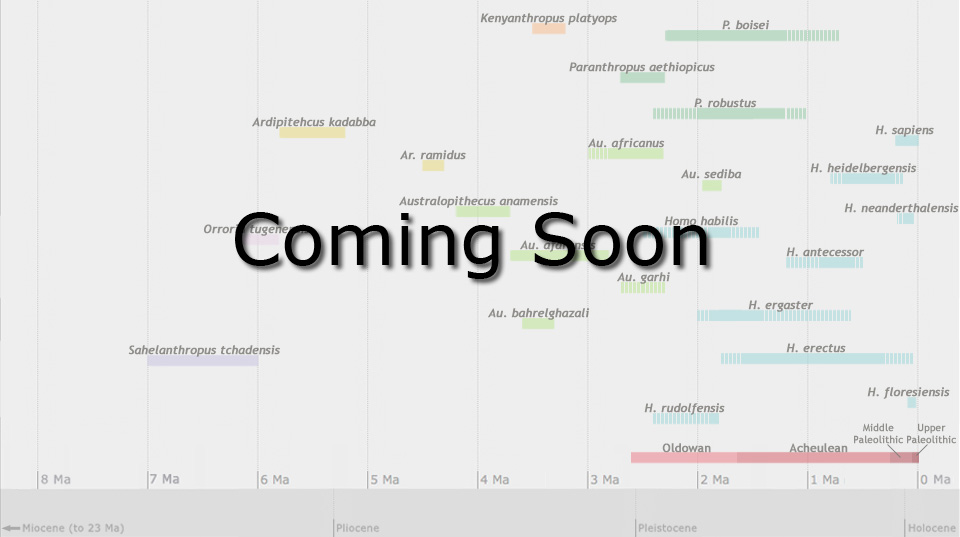
The precise relationship among early hominin ancestors is unclear, though scientific methodologies can help determined the most parsimonious relationships. Since only a very small percentage of the extinct hominin population has been discovered in the fossil record, perhaps as small as >1%, scientists can only construct evolutionary relationships based on their currently knowledge. With each new hominin fossil discovered, the possible evolutionary relationship between species may be reinforced or even change dramatically.
Scientists must consult a wide array of scientific evidence in order to determine which ancestral-descendant relationship is the most likely, though there are many differing opinions. The phylogenies presented here are just a few of the working hypotheses from different authors. Phylogengies and cladograms are constantly being reworked as more fossil and genetic material becomes available.
References:

The precise relationship among early hominin ancestors is unclear, though scientific methodologies can help determined the most parsimonious relationships. Since only a very small percentage of the extinct hominin population has been discovered in the fossil record, perhaps as small as >1%, scientists can only construct evolutionary relationships based on their currently knowledge. With each new hominin fossil discovered, the possible evolutionary relationship between species may be reinforced or even change dramatically.
Scientists must consult a wide array of scientific evidence in order to determine which ancestral-descendant relationship is the most likely, though there are many differing opinions. The phylogenies presented here are just a few of the working hypotheses from different authors. Phylogengies and cladograms are constantly being reworked as more fossil and genetic material becomes available.
References:

The precise relationship among early hominin ancestors is unclear, though scientific methodologies can help determined the most parsimonious relationships. Since only a very small percentage of the extinct hominin population has been discovered in the fossil record, perhaps as small as >1%, scientists can only construct evolutionary relationships based on their currently knowledge. With each new hominin fossil discovered, the possible evolutionary relationship between species may be reinforced or even change dramatically.
Scientists must consult a wide array of scientific evidence in order to determine which ancestral-descendant relationship is the most likely, though there are many differing opinions. The phylogenies presented here are just a few of the working hypotheses from different authors. Phylogengies and cladograms are constantly being reworked as more fossil and genetic material becomes available.
References:
The precise relationship among early hominin ancestors is unclear, though scientific methodologies can help determined the most parsimonious relationships. Since only a very small percentage of the extinct hominin population has been discovered in the fossil record, perhaps as small as >1%, scientists can only construct evolutionary relationships based on their currently knowledge. With each new hominin fossil discovered, the possible evolutionary relationship between species may be reinforced or even change dramatically.
Scientists must consult a wide array of scientific evidence in order to determine which ancestral-descendant relationship is the most likely, though there are many differing opinions. The phylogenies presented here are just a few of the working hypotheses from different authors. Phylogengies and cladograms are constantly being reworked as more fossil and genetic material becomes available.
References:
The precise relationship among early hominin ancestors is unclear, though scientific methodologies can help determined the most parsimonious relationships. Since only a very small percentage of the extinct hominin population has been discovered in the fossil record, perhaps as small as >1%, scientists can only construct evolutionary relationships based on their currently knowledge. With each new hominin fossil discovered, the possible evolutionary relationship between species may be reinforced or even change dramatically.
Scientists must consult a wide array of scientific evidence in order to determine which ancestral-descendant relationship is the most likely, though there are many differing opinions. The phylogenies presented here are just a few of the working hypotheses from different authors. Phylogengies and cladograms are constantly being reworked as more fossil and genetic material becomes available.
References:
eFossils is a collaborative website in which users can explore important fossil localities and browse the fossil digital library. If you have any problems using this site or have any other questions, please feel free to contact us.
Funding for eFossils was provided by the Longhorn Innovation Fund for Technology (LIFT) Award from the Research & Educational Technology Committee (R&E) of the IT governance structure at The University of Texas at Austin.
